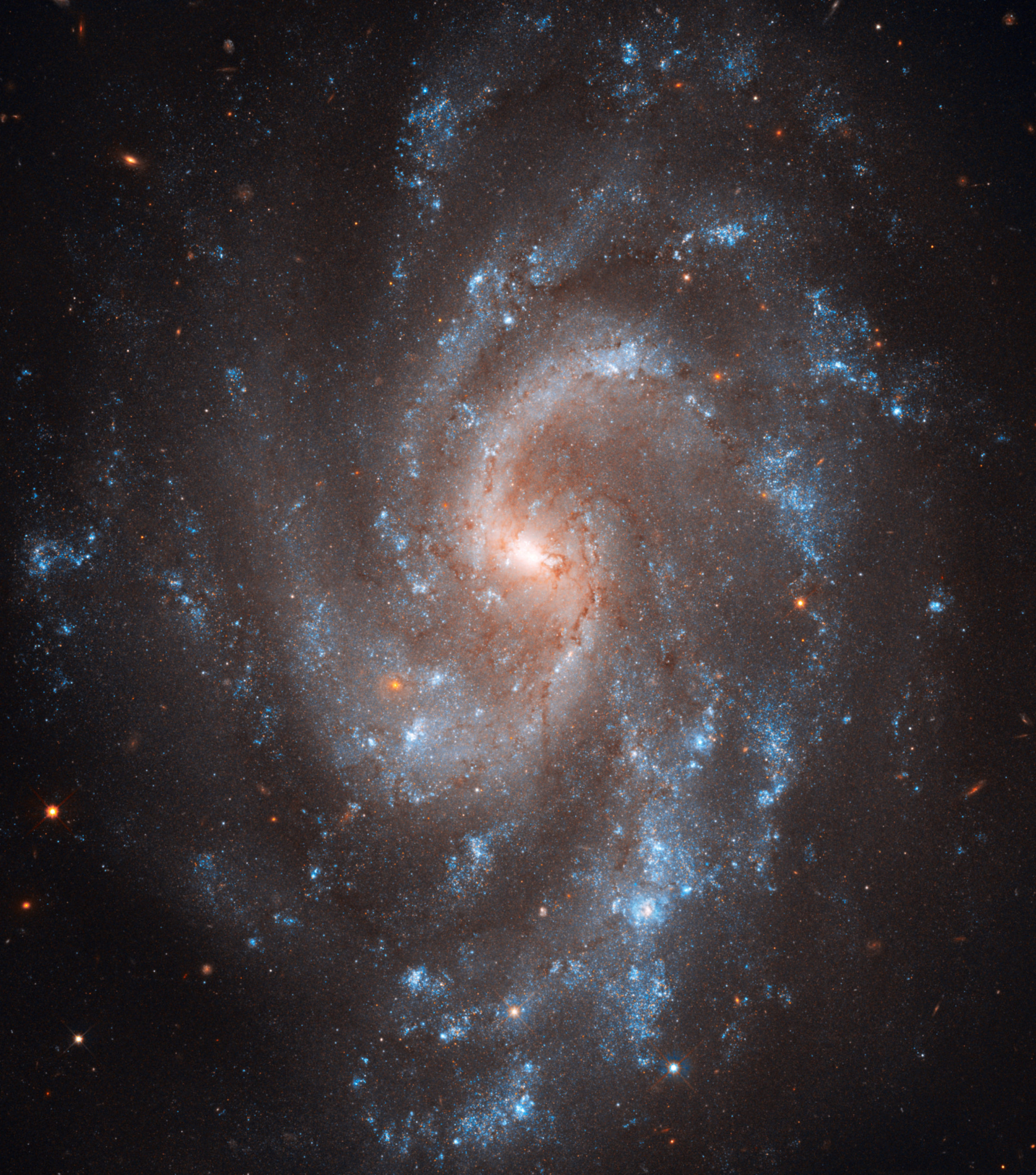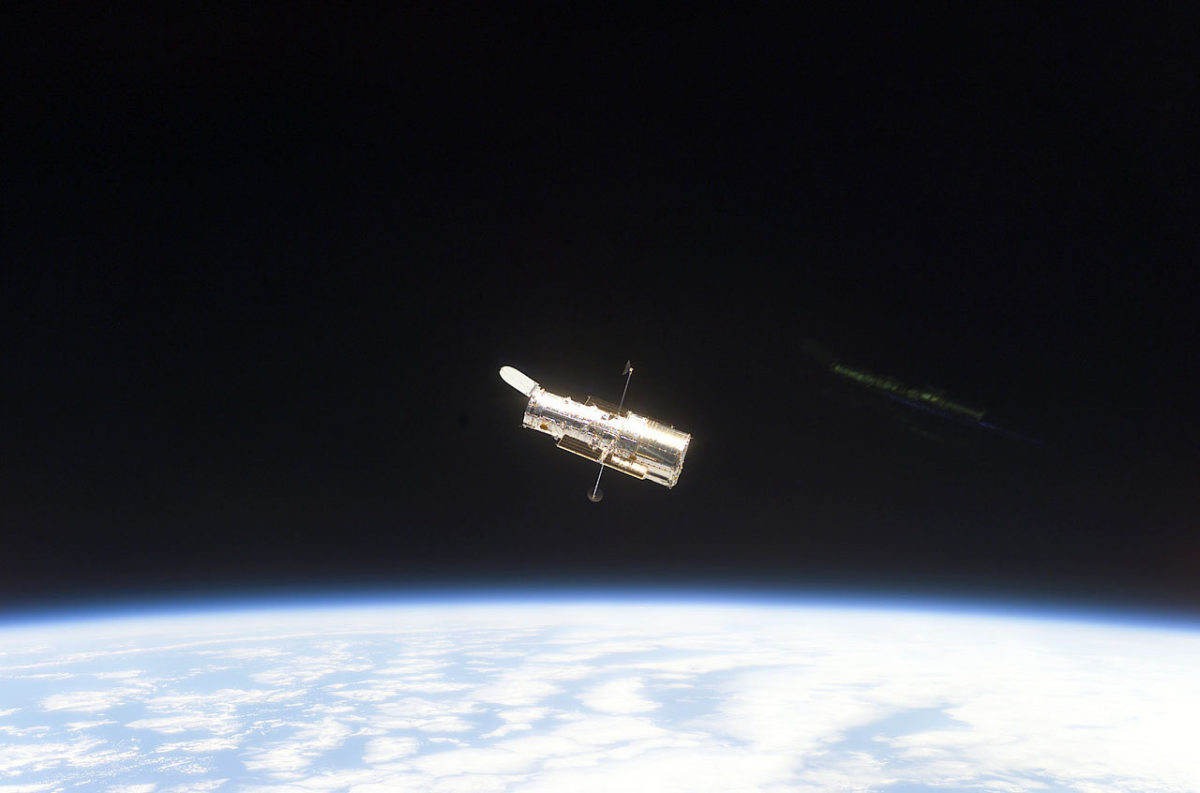Emily Lakdawalla • Feb 14, 2013
Why can Hubble get detailed views of distant galaxies but not of Pluto?
How come Hubble's pictures of galaxies billions of light years away are so beautifully detailed, yet the pictures of Pluto, which is so much closer, are just little blobs? I get asked this question, or variations of it, a lot. Indeed, it's hard to fathom; in our heads the distance to Pluto is "far" and the distance to other galaxies "very far" but I doubt that very many people have any intuitive understanding for how far either one of those distances is, much less their relative sizes. (I certainly don't.)
The good news is, some fairly basic math will help you understand why Hubble's pictures of galaxies look like this:

While the pictures of Pluto and its moons look like this:

The basic question that we're asking here is, how large do galaxies and Pluto appear in the sky? To answer that question, we need to know their sizes and distances.
- According to the "Fast Facts" published with that Hubble image of galaxy NGC 5584, it is about 72 million light-years away, and the photo spans 50,000 light-years.
- On the date of the Pluto-and-moons image (July 7, 2012), the Solar System Simulator tells us that Pluto was 4.675 billion kilometers from Earth. Pluto is about 2400 kilometers across.
To gauge how large these things appear in our sky, we can take the ratio of these things' sizes to their distances. But don't take out your calculators yet. Before you start punching in numbers with lots of zeros, you should first do a mental reality check on their order-of-magnitude proportions.
- The galaxy is like a hundred thousand wide divided by a hundred million away; that ratio should be around a thousandth.
- Pluto is like a thousand wide divided by a billion away; that ratio should be around a millionth.
- So we already know that the galaxy should appear about a thousand times bigger in the sky than Pluto does!
It's important to do a reality check like this first, because when you're dealing with very large or very small numbers, forgetting to punch in one zero in your calculator can majorly affect the outcome of your calculations. Now that we've done that, we can plug in the actual numbers.
- For the galaxy, 50,000 light-years / 72 million light-years = 0.00069
- For Pluto, 2400 km / 4675 million km = 0.00000051
- Take the ratio of those two and you'll see that the galaxy appears 1300 times bigger than Pluto. (See, our earlier order-of-magnitude estimate of a thousand times bigger was pretty close.)
How well should Hubble see either the galaxy or Pluto? To answer this question, you need to know the angular resolution of Hubble's camera. The Wide Field Camera 3 (WFC3) was used for both of these photos. Look up its angular resolution and you'll find out that it is 0.04 arcseconds. (An arcsecond is 1/3600 of a degree.) That is, a single Hubble pixel spans an angle of 0.04 arcseconds.
I like to convert this number into radians: you get 0.04 arcsec * 1/3600 degree/arcsec * 2pi radians / 360 degrees = 0.00000019 radians, or 0.19 microradians. Why would I want to do this conversion? It's because of a trick you can do with angular measurements when you're dealing with very small angles. When the angle is very small, the tangent of that angle is approximately the same as the angle, when you're expressing the angle in radians. Remember how you calculate the tangent of an angle? SOHCAHTOA? It's the length of the side of a right triangle opposite the angle divided by the length of the side adjacent to the angle. Our triangle is so skinny that it's a fair approximation to call it a right triangle. Looking at our galaxy on the sky, we're talking about the galaxy's width divided by its distance from the observer -- the same ratio we calculated before.
So the ratio of the galaxy's width to its distance from us, 0.00069, tells us the angle that the galaxy subtends on the sky, in radians. Divide that by WFC3's angular resolution in radians per pixel, 0.00000019, and you get 3600 pixels. We calculated earlier that Pluto appears only 1/1300th as large -- so it's not even 3 pixels across in Hubble's view.
Pluto is a rather small world, but even if you put Jupiter (which is 60 times bigger) at Pluto's distance from the Sun, it'd only be about 150 pixels across -- still way smaller than the galaxy appears.
Galaxies are far away, it's true, but many of them are bigger than they are far, at least by comparison to the worlds within our solar system! Think about that for a moment -- how something that is millions of light-years away can still appear a thousand times bigger than something that's inside our own solar system.
Homework problem (yes, homework!):
Here's a related question that I get asked a lot. There is a spacecraft on its way to Pluto right now, with a very sharp-eyed camera. New Horizons is beyond Uranus' orbit now, and is closer to Pluto than it is to Earth. In fact, Pluto is just about a billion kilometers away right now, while Earth is about 4 billion kilometers away; so New Horizons is 4 times closer to Pluto than Earth is. Shouldn't New Horizons be getting pictures of Pluto that are better than Hubble's by now?
Obviously we're not seeing great New Horizons pictures of Pluto yet, so the answer must be no, but you should try calculating it for yourself. And then answer the question: when will New Horizons' pictures of Pluto be better than what we can get from Hubble? Some key information to get you going: New Horizons' highest-resolution camera, LORRI, has an angular resolution of about 5 microradians. And if you want to see how far New Horizons will be from Pluto on future dates, use JPL's Solar System Simulator.
I'll post the answer on Monday!

Let’s Go Beyond The Horizon
Every success in space exploration is the result of the community of space enthusiasts, like you, who believe it is important. You can help usher in the next great era of space exploration with your gift today.
Donate Today

 Explore Worlds
Explore Worlds Find Life
Find Life Defend Earth
Defend Earth

